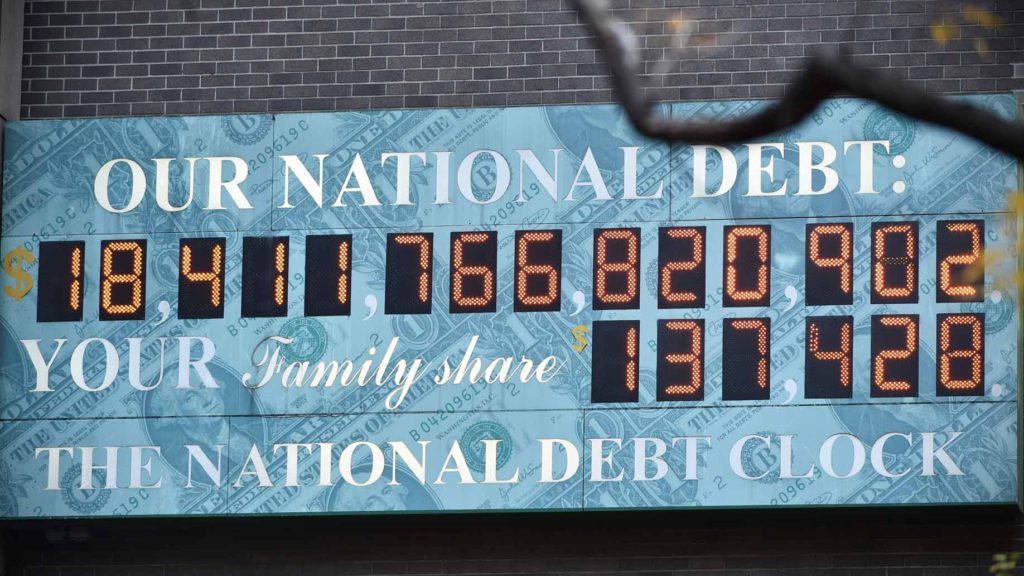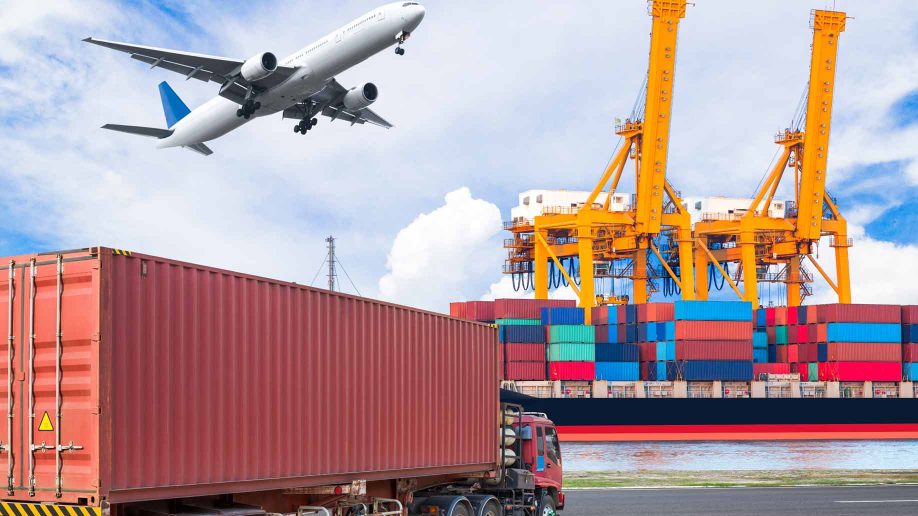 The election is over, and the people have spoken. Donald Trump will be the next President of the United States. For years, political pundits and academicians will discuss the outcome and the possible reasons for the unexpected results. At this time, no one knows how President Trump will govern. Presumably, he will attempt to fulfill the promises that he made during the campaign. If so, who are the likely Winners and Losers as a consequence of the Republican sweep of the Presidency, the Senate, and the House of Representatives?
The election is over, and the people have spoken. Donald Trump will be the next President of the United States. For years, political pundits and academicians will discuss the outcome and the possible reasons for the unexpected results. At this time, no one knows how President Trump will govern. Presumably, he will attempt to fulfill the promises that he made during the campaign. If so, who are the likely Winners and Losers as a consequence of the Republican sweep of the Presidency, the Senate, and the House of Representatives?
Here are my initial thoughts:
WINNERS
The American Democracy
Despite claims of voter fraud and election fixes by some as well as concerns about the peaceful transfer of power from one Presidency to another, it is clear that the transition will be peaceful. Candidate Clinton conceded the election and offered to help the new President in any way she could. President Obama has invited the President-to-be to the White House to begin the plans for the upcoming transition. Unlike other countries, most Americans will accept the new President and hope that the future will be better for all.
The UltraRight
Having been ignored or chastised by the public and political parties generally, the election of Donald Trump has returned the most extreme element of the Republican Party to power. As a consequence, Federal regulations will be severely cut back, and power will be restored to State legislatures. In many states, this means that recent laws expanding the rights of minorities will be rolled back including same-sex marriage, a return to racial profiling, and the expansion of Christian religious beliefs in the everyday lives of Americans.
NRA, Gun Owners & Dealers
The NRA was the first major organization to endorse Trump and noted the day after the election that “He [Trump] will certainly remember who helped propel him to office and the promises he made to respect our right to bear arms.” As a consequence, efforts to expand laws to reduce the ownership and carry of guns of all types will be unsuccessful. Federal and State legislature will repeal existing laws restricting the sale of guns, and expand open-carry laws.
Soviet Union
Russian President Vladimir Putin quickly announced his support for a Trump Presidency and the possibility of new Russian-American relations. Trump had previously recognized Putin as “ strong leader – stronger than our President.” He has also indicated his support of Russia’ absorption of the Crimea in a July 31, 2016, interview with ABC’s George Stephanopoulos with his statement that “The people of Crimea, from what I heard, would rather be with Russia than where they were.”
The Top 1% of Tax Payers
According to studies by the Citizens for Tax Justice, Trump’s tax plan will deliver “massive tax breaks to the wealthiest Americans and a pittance to the poorest.” The Tax Policy Center projects that “the largest benefits (47% of all cuts in 2017 going to the top 1%) would go to the highest income households.” The Tax Foundation concurs, projecting that the top 1% will receive an increase ranging from 10.2% to 16% while the average taxpayer would get an increase of less than 1%.
Coal and Oil Industries
According to an article in the Wall Street Journal, a Tump victory means eased regulations, lifting limits on mining and drilling on federal lands, and the promotion of energy-related infrastructure including oil and gas pipelines. He also promised to repeal regulations regarding the production and use of coal, including environmental regulations.
White Conservative Evangelicals
Despite Trump’s marital history and questionable statements about women, white evangelicals turned out in greater numbers than for Romney, McCain, or Romney in recent elections. In a meeting January 24, 2016, in Sioux Center, Iowa, Trump promised with evangelicals, “I am a true believer. . . When I win, the war on Christianity stops! . . . If I’m there [as President” ], you’re going to have plenty of power. You don’t need anyone else, you’re going to have someone representing you very, very well, remember that.”
LOSERS
Partisan Cooperation
Despite calls for an end to political deadlock and return to civility, Trump promised to appoint a special prosecutor to “put Hillary in jail,” repeatedly labeled his opponent “Crooked Hillary,” and encouraged his supporters’ chants to “Lock her up!” His public pronouncements – if implemented – will widen the gap between neighbors, families, and friends with opposing political views.
President Barak Obama
Trump, with the assistance of a Republican Senate and House, has promised to roll back Obama’s Executive Orders, renege on the Iran Nuclear Agreement, cancel the Paris Agreement to address climate change, and halt participation in the TransPacific Partnership (TPP). He has also promised to repeal The Accountable Care Act, President Obama’s most noteworthy accomplishment.
House Speaker Paul Ryan
With the election of Trump, he replaces House Speaker Paul Ryan as the country’s #1 Republican. Also, Trump and his supporters are likely to hold Ryan accountable for his failure to fully endorse the President-to-be during the election cycle. Finally, many of Trump’s positions during the campaign are contrary to positions the Republican Establishment has carefully developed under Ryan’s leadership.
Republican Establishment
Trump’s unorthodox campaign focused upon a rigged system that disadvantages the average American. His targets included the Republican leadership and those members who failed to support him or, in many cases, actively campaigned against his election. His self-identified penchant for “counter-punching” does not bode well for cooperation among the Party elite, the elected Congressional members, and his Executive Branch.
Federal Bureau of Investigation
Director James Comey’s ill-advised insertion into Presidential politics eleven days before election (despite acknowledging that there was no new evidence regarding Clinton’s emails0 has significantly reduced the Bureau’s reputation for thoroughness and professionalism. His latest act followed confusing testimony regarding Clinton’s culpability, but not criminality in the in the initial investigation during the campaign. The subsequent exposure of deep division within the organization suggests significant changes will occur in the coming months.
NATO
During the campaign, Trump questioned the value of the North American Treaty Organization, a 28-nation alliance established in 1949. In an interview with the New York Times in July 2016, he stated that he would decide to honor the terms of the pact only after reviewing whether they had fulfilled their obligations to us, i.e, paid for their defense. According to Trump, “We are spending a fortune on military in order to lose $800 billion. That doesn’t sound very smart to me.”
Immigrants
Whether a Syrian refugee or an illegal from Mexico, Trump has shown an antipathy to immigrants. President-to-be Trump has repeatedly promised to build a wall between the borders of the United States and Mexico, deport millions of illegals peaceably residing in this country for years, and reject Muslim refugees from the war territories in the Middle East.
Free Trade and American Consumers
Trump’s promise to restore American jobs by renegotiation of existing trade deals and imposing penalties on imported goods will result in higher prices for goods for all Americans, whether in the form of higher tariffs or increased labor costs.
Science and Environment
As Trump said early in his campaign, “I love the poorly educated. We’re the smartest people, we’re the most loyal people.” He distrusts science, tweeting on November 6, 2012, that “The concept of global warming was created by the Chinese in order to make U.S. Manufacturing non-competitive. Vice President-to-be Mike Pence has questioned the validity of evolution and proposed the teaching of creationism – intelligent design – in public schools.
Final Word
Undoubtedly, others may conclude a different list of winners and losers. One of the contentious elements of the campaign was President-to-be Trump’s deplorable statements about women in conversation with entertainer Billy Bush. This might lead some to conclude that women are one of the preeminent losers of the election. However, Mr. Trump;s employment of women in key executive positions in his companies suggests his position is evolving. As a consequence, I have deferred on including women on this list.
When discussing Trump’s election with a staunch Republican friend this morning, he assured me that President Trump’s actions would not reflect Candidate Trump’s promises. According to him, Trump will not seek to prosecute Clinton, build a border wall, or implement any of his more extreme campaign promises that appealed to his core supporters. He will, instead, implement traditional Republican policies following the counsel of such luminaries as Speaker Ryan, Senate Majority Leader McConnell, former Mayor of New York Rudy Giuliani, and Governor Chris Christie.
Which Trump will we see in the Presidency? I hope for all our sakes he is a uniter, not a divider, even if it means he reneges on his campaign promises.

 The loss of American jobs has become a potent political issue. Politicians promise to reverse the trend of offshoring and to restore American workers to their previous position as the premier workforce in the world. Many tout new reshoring initiatives, claiming that jobs will return as wage differentials shrink, the quality of foreign goods falls, and shipping costs increase. Others propose new punitive legislation with penalties for moving jobs to foreign countries while erecting trade barriers to ensure that domestic products can compete with lower-priced foreign goods.
The loss of American jobs has become a potent political issue. Politicians promise to reverse the trend of offshoring and to restore American workers to their previous position as the premier workforce in the world. Many tout new reshoring initiatives, claiming that jobs will return as wage differentials shrink, the quality of foreign goods falls, and shipping costs increase. Others propose new punitive legislation with penalties for moving jobs to foreign countries while erecting trade barriers to ensure that domestic products can compete with lower-priced foreign goods. According to projections by the Congressional Budget Office (CBO), America will continue to spend more than it receives in revenues from 2016 to 2026, and perhaps beyond. The budget deficit is projected to be slightly below 3% of gross domestic product (GDP) through 2018, then rise to 4.9% by 2026.
According to projections by the Congressional Budget Office (CBO), America will continue to spend more than it receives in revenues from 2016 to 2026, and perhaps beyond. The budget deficit is projected to be slightly below 3% of gross domestic product (GDP) through 2018, then rise to 4.9% by 2026. The debate about free trade versus protective tariffs (taxes) has raged for centuries. However, it has become especially virulent as industrialized countries lose an increasing amount of jobs to emerging nations. Free traders, worried about the possibility of new tariffs to protect native industries, predict a trade apocalypse. Reported by TIME, Robert Zoellick, president of the World Bank, claimed, “If we start to trigger a round of protectionism, as you saw in the 1930s, it could deepen the world crisis.”
The debate about free trade versus protective tariffs (taxes) has raged for centuries. However, it has become especially virulent as industrialized countries lose an increasing amount of jobs to emerging nations. Free traders, worried about the possibility of new tariffs to protect native industries, predict a trade apocalypse. Reported by TIME, Robert Zoellick, president of the World Bank, claimed, “If we start to trigger a round of protectionism, as you saw in the 1930s, it could deepen the world crisis.”